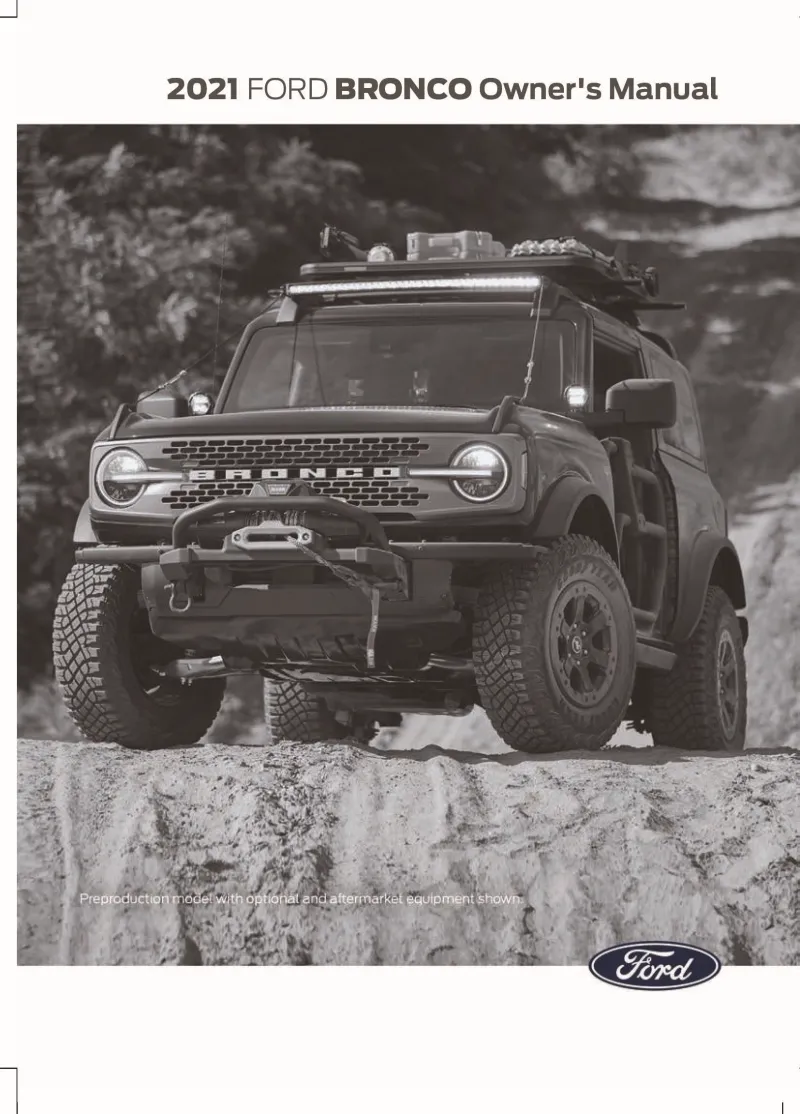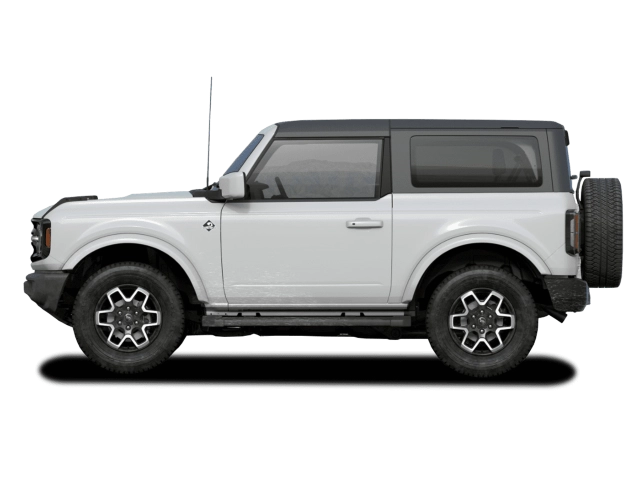2021 Ford Bronco Owner's Manual

Table of Contents
2021 Ford Bronco Overview
Introduction
The 2021 Ford Bronco marks the much-anticipated return of this American classic, delivering a robust blend of style, performance, and off-road capability. Designed for adventurers and enthusiasts alike, the Bronco is built to tackle rigorous terrains while offering a modern experience packed with technology and comfort. With its rugged exterior and versatile interior, the Bronco stands out in the crowded SUV market as a true pioneer of the great outdoors.
Powertrains
The 2021 Bronco offers two impressive powertrains to suit various driving preferences. The first is a 2.3-liter EcoBoost turbocharged inline-four engine generating 270 horsepower and 310 lb-ft of torque, providing ample power for both city driving and off-road excursions. The second option is a more robust 2.7-liter EcoBoost V6 engine, delivering a thrilling 310 horsepower and 400 lb-ft of torque, ensuring that drivers have the muscle needed for any adventure. Both engines can be paired with a 7-speed manual transmission or a 10-speed automatic to enhance the driving experience.
Trims
The 2021 Ford Bronco comes in several trims, including the Base, Big Bend, Black Diamond, Outer Banks, Badlands, and Wildtrak. Each trim level caters to different lifestyles and preferences, from the rugged and utilitarian to the more refined and stylish options. The Badlands trim focuses on off-road capabilities with added features, while the Wildtrak offers sporty upgrades perfect for thrill-seekers.
Features
Equipped with cutting-edge technology, the Bronco ensures both safety and convenience. A standard Ford Co-Pilot360 suite includes advanced driver-assistance systems, while a high-resolution infotainment system with an available 12-inch touchscreen makes navigation and communication effortless. The interior also features high-quality materials and available options such as leather upholstery and heated seats, enhancing comfort during off-road adventures.
Owner's Manual
The 2021 Ford Bronco comes with a comprehensive owner's manual designed to help owners understand their vehicle's features and maintenance requirements. This manual covers everything from troubleshooting to scheduled service intervals, ensuring that drivers get the most out of their Bronco while keeping it in optimal condition for years to come.
User manual download
The Ford Bronco owner manual for the 2021 model year is to be found in PDF downloadable format on this page. The owner manual for the model year 2021 is free and in English, but the repair manuals are usually not easy to get and may cost more.
Manual Questions
Fill the form below and someone will help you!

